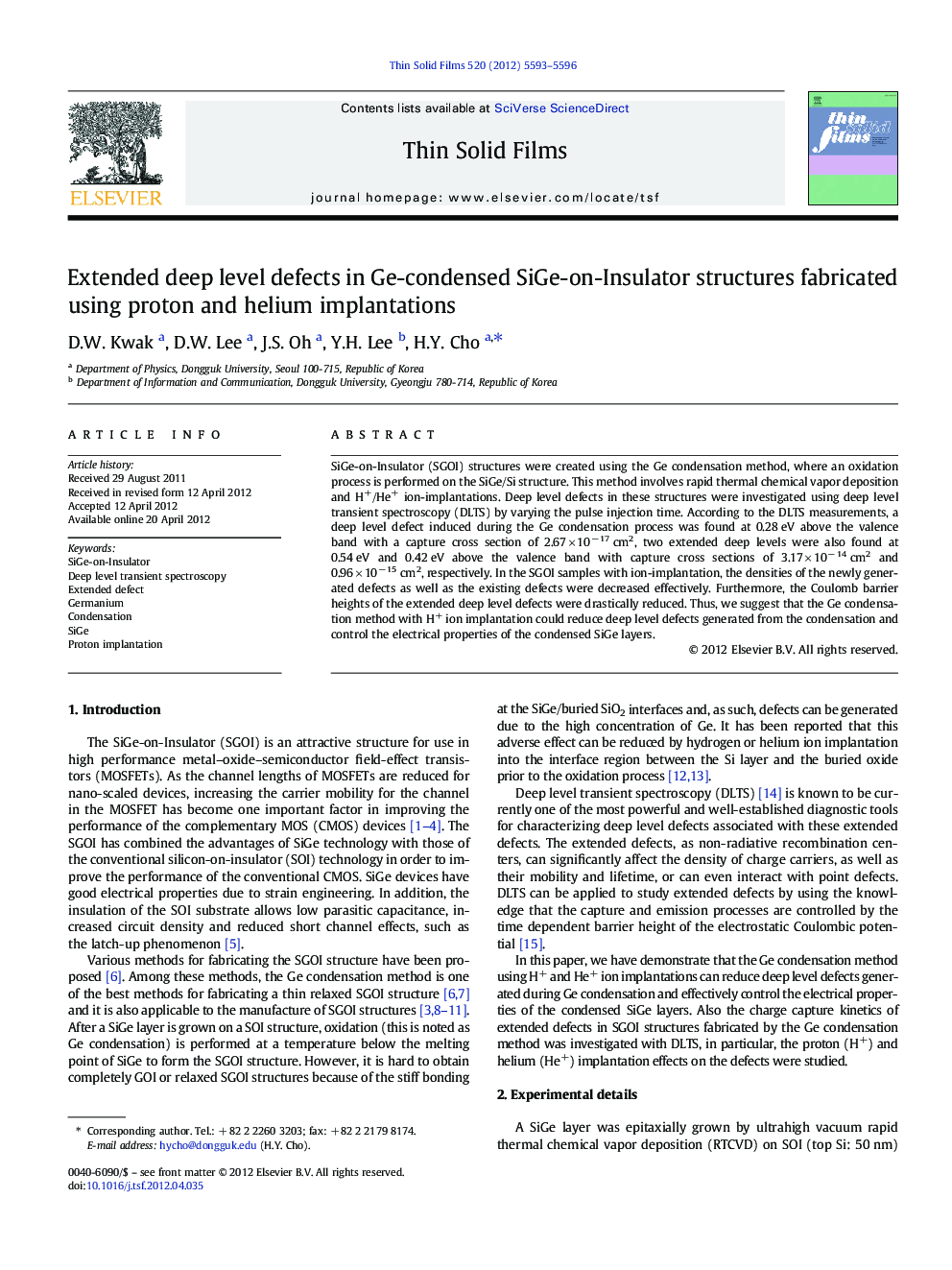| Article ID | Journal | Published Year | Pages | File Type |
|---|---|---|---|---|
| 1667412 | Thin Solid Films | 2012 | 4 Pages |
SiGe-on-Insulator (SGOI) structures were created using the Ge condensation method, where an oxidation process is performed on the SiGe/Si structure. This method involves rapid thermal chemical vapor deposition and H+/He+ ion-implantations. Deep level defects in these structures were investigated using deep level transient spectroscopy (DLTS) by varying the pulse injection time. According to the DLTS measurements, a deep level defect induced during the Ge condensation process was found at 0.28 eV above the valence band with a capture cross section of 2.67 × 10− 17 cm2, two extended deep levels were also found at 0.54 eV and 0.42 eV above the valence band with capture cross sections of 3.17 × 10− 14 cm2 and 0.96 × 10− 15 cm2, respectively. In the SGOI samples with ion-implantation, the densities of the newly generated defects as well as the existing defects were decreased effectively. Furthermore, the Coulomb barrier heights of the extended deep level defects were drastically reduced. Thus, we suggest that the Ge condensation method with H+ ion implantation could reduce deep level defects generated from the condensation and control the electrical properties of the condensed SiGe layers.
► We have fabricated low-defective SiGe-on-Insulator (SGOI) with implantation method. ► H+ and He+-ions are used for ion-implantation method. ► We have investigated the deep level defects of SGOI layers. ► Ge condensation method using H+ ion implantation could reduce extended defects. ► They could enhance electrical properties.
